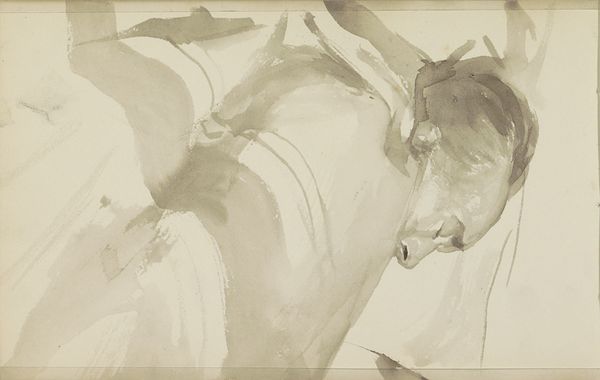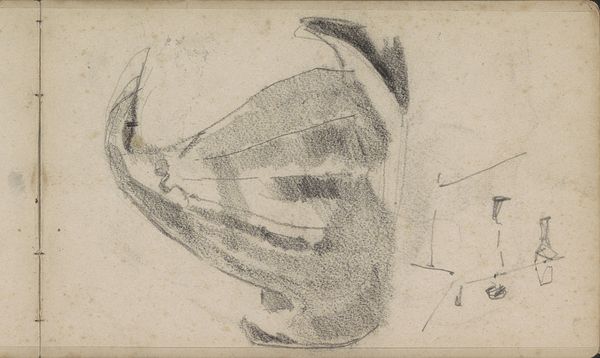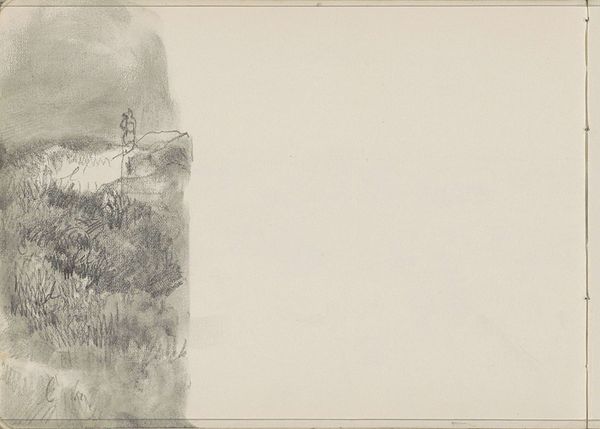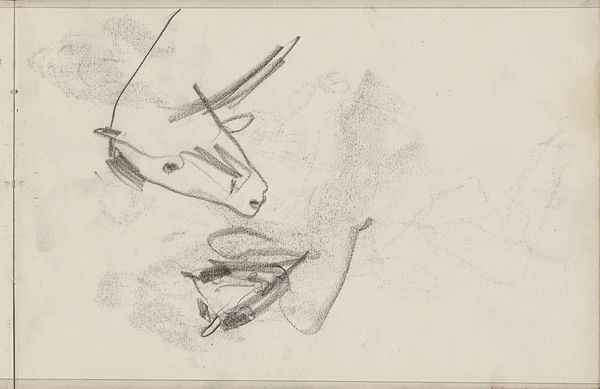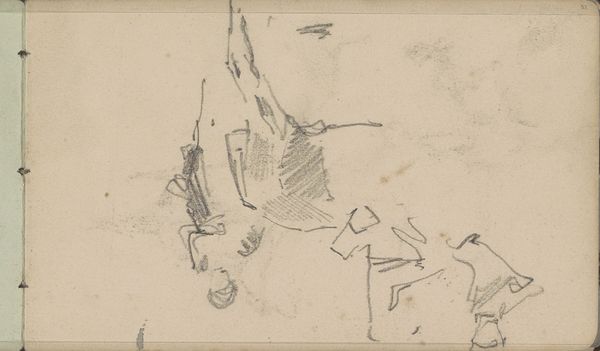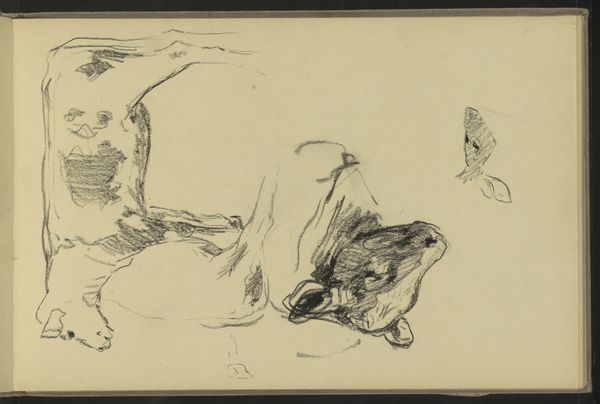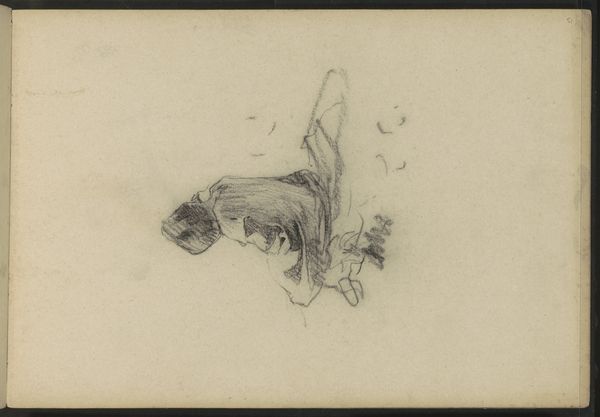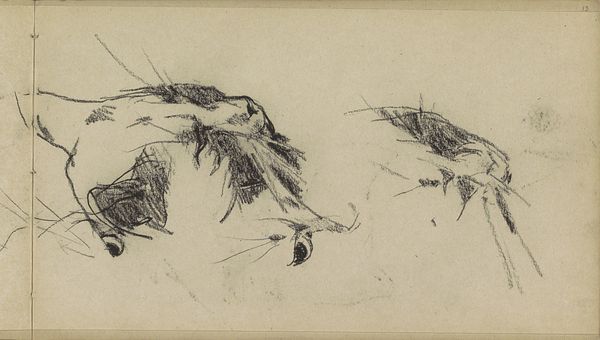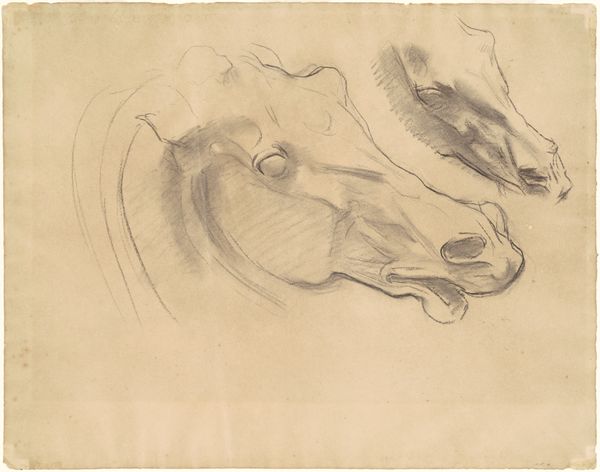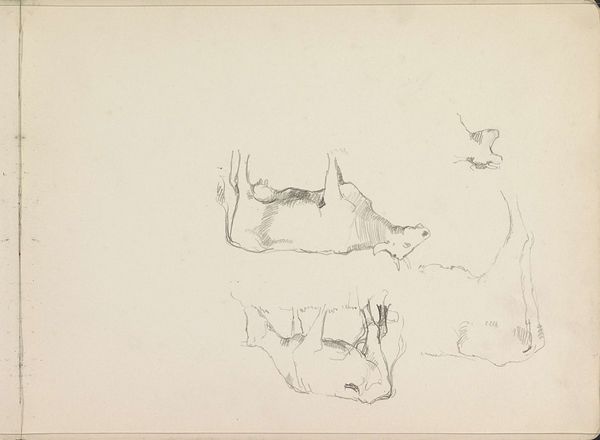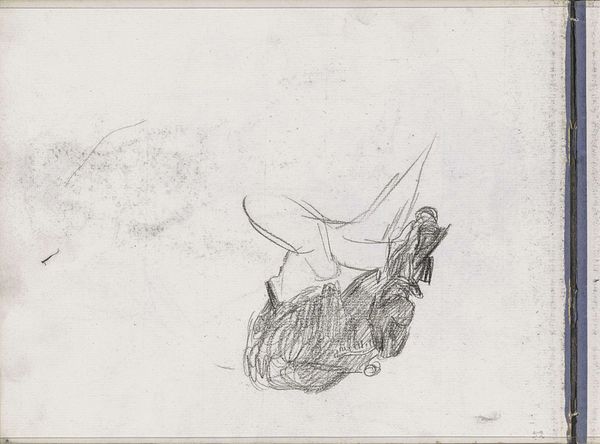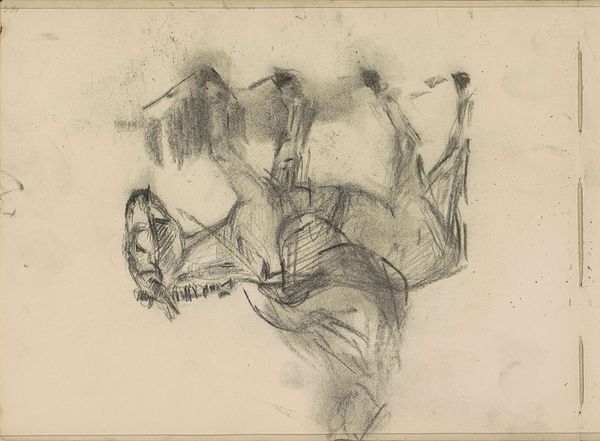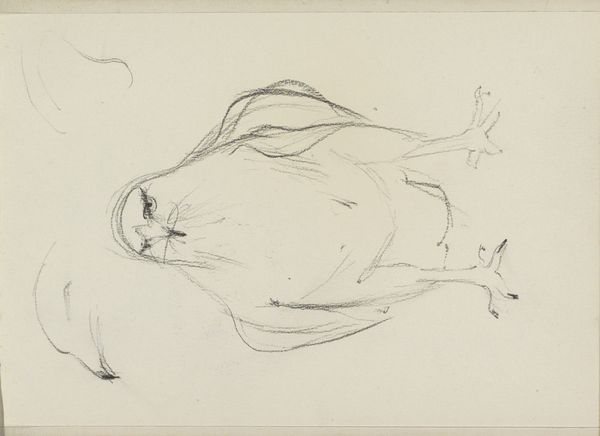
Copyright: Rijks Museum: Open Domain
Editor: Here we have "Portretkop van een slapende Alphons Grandmont," a watercolor portrait painted sometime between 1892 and 1913, currently at the Rijksmuseum. I’m struck by how the monochrome palette lends a sense of peacefulness, even vulnerability to the sitter. How do you read this work, considering its composition and form? Curator: The composition employs a distinct contrast, doesn't it? Notice the delicate washes of watercolor that define the form of the head, sharply juxtaposed with the expanse of untouched paper. This asymmetry invites contemplation. Are we meant to focus solely on the contours of the face, or to consider the void around it as equally meaningful? Editor: That’s interesting. It almost feels like the emptiness around him highlights his solitude in sleep. Is the very lack of detail in some way significant? Curator: Precisely. The negative space isn't merely background; it's an active element that affects how we perceive the represented form. Observe how the artist utilizes gradations of tone and variations in brushstroke, moving from suggestive outlines to more definitive contours to subtly emphasize the brow and nose of the sitter. It’s this tension between suggestion and definition which creates an aesthetically charged relationship. The form itself implies content. Editor: So, it's less about the specifics of *who* he is and more about *how* the artist captures the essence of sleep through formal techniques? Curator: Yes. We see the artist’s structural choices reflected as the actual subject. It showcases how an artist can create depth through tonal structure with simple shapes. Editor: I never would have thought to interpret it that way. I was so focused on the subject’s restfulness! Curator: Well, art offers multiple valid perspectives! Through detailed analysis, one appreciates how material elements and formal relationships influence aesthetic effects. Editor: Thanks to our talk, I realize how critical close reading is and how crucial negative space can be.
Comments
No comments
Be the first to comment and join the conversation on the ultimate creative platform.
